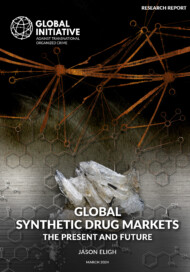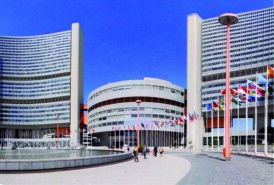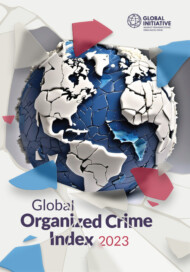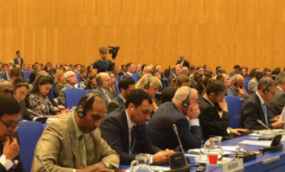Posted on 09 Apr 2024
At the 67th session of the UN’s Commission on Narcotic Drugs (CND), member states met to take stock of progress made in implementing the 2019 Ministerial Declaration on drug policy commitments and to adopt a number of resolutions on specific aspects of drug policy. Despite the adoption of a political declaration by consensus, states did not maintain consensus-based decision-making throughout the meeting, heralding long overdue progress towards more humane and effective drug policies, particularly in the area of harm reduction. Despite this historic step forward, the future direction of the international drug policy debate remains uncertain.
In the run-up to the CND meeting, held in Vienna from 14 to 22 March 2024, it was not clear that member states would be able to reach a consensus on the outcome of the review, reflecting growing challenges to multilateralism. However, after more than 120 hours of negotiations since January 2024, states seemed to keep the UN in Vienna’s usual cooperative spirit alive by adopting a declaration. They committed to broadly agreed compromises to address the ‘world drug problem’ (although many states no longer refer to drugs as a ‘problem’) in accordance with the principles of the UN Charter and international human rights law, and expressed concern about the proliferation and harm of synthetic drugs.
Although consensus was reached, two statements were subsequently issued outlining starkly opposing approaches to drug policy from different sides of the camp. One, delivered by Colombia and representing 62 countries, including most of Europe and the Americas, called for a review and reassessment of the international drug control system, and supported human rights. The other, delivered by Russia and supported by 40 countries, criticized the legalization of cannabis and called for a ‘society free of drug abuse’, echoing an approach to drug policy that prevailed before the UN General Assembly’s landmark special session on drugs in 2016.
The apparent consensus on the declaration was reflected in the fact members showed near unanimity in adding a number of substances to be controlled under the conventions. However, the deeper current of polarization on drug policy seen in the two opposing statements would resurface with dramatic effect when two of the session’s resolutions failed to reach consensus and had to be put to a vote, breaking with longstanding practice in Vienna.
A paradigm shift on harm reduction
Only two of the four resolutions managed to bypass the political drama. The first was a resolution tabled by Chile on promoting recovery and related support services for people with drug-use disorders. The second was a resolution tabled by Belgium, on behalf of the EU, on promoting awareness raising, education, training and data collection to ensure the availability of and access to controlled substances for medical and scientific purposes, while preventing their diversion to illicit channels and non-medical use. Despite extensive debate, both resolutions were adopted by consensus on the penultimate day.
The other two resolutions were put to a vote on the final day. A resolution on alternative development, tabled by Germany, Thailand and Peru, which sought to build on previous efforts (including its predecessor, the resolution adopted in 2023), faced resistance and attempts to change the agreed language. It was held hostage mainly by Iran’s opposition to the inclusion of language on gender and technology transfer (a common dividing line in UN-based processes), as well as attempts to insert language opposing sanctions. The resolution was adopted by a majority vote during the final plenary session.
A resolution on overdose prevention and harm reduction, tabled by the US, received the most attention and resulted in a monumental shift in CND practice, approach and policy. The term ‘harm reduction’, which is recognized by the World Health Organization and widely used throughout the UN system, has long been opposed by states with a more conservative approach to drug policy and was therefore the main obstacle to achieving consensus on the resolution.
The US, which had traditionally opposed the use of the term, introduced the resolution in the context of its opioid crisis, stressing the importance of implementing effective measures and initiatives to minimize the negative public health and social consequences of the non-medical use of synthetic drugs. After lengthy discussions, during which the text was significantly watered down, the resolution was put to a vote, as it was made clear that countries leading advocacy for both sides of the debate would accept a compromise. Russia, who led the opposition to including the term, criticized the adoption process, claiming that it deviated from the norms of the CND. China reiterated its reservations on harm reduction and emphasized the need for a comprehensive approach to global drug issues, highlighting the lack of consensus in the international community on this issue. Most members of the commission (38 out of 53) supported the resolution – including some unexpected states, such as Singapore, Indonesia and Saudi Arabia, all of which take a hard line on drug policy. China and Russia voted against it but were unable to bring more ‘middle ground’ countries into their camp.
The positions of African countries on this resolution were remarkably divided, with the more progressive drug policy environments – represented by Morocco, Ghana and South Africa – voting in favour, but Nigeria and Kenya (two of the most active African delegations in Vienna) choosing not to take part in the vote. Algeria, which has a drug policy and political-ideological stance more in line with China and Russia, chose to abstain. The outcome shows how realpolitik played a key role in the voting process, alongside genuine views on drug policy.
The use of the term ‘harm reduction’ in a resolution is a landmark achievement in drug policy and represents a clear and overdue shift towards a public-health approach to drugs at the UN. This opens the door for more progressive approaches to drugs to be considered by the CND, as the ‘Vienna spirit’ (whereby UN resolutions are adopted by consensus) has clearly held back progress on drug policy. However, the wider implications for drug policy and for the broader range of decision-making forums in Vienna are still unclear, and there will undoubtedly be efforts by opponents of progressive drug policy to organize pushback.
The different perspectives were also reflected in the politics of civil society representation at the CND. The Vienna NGO Committee on Drugs held elections that ended up shifting the composition of its committee towards a more conservative representation, moving in the opposite direction to member states. This change is clearly due to political coordination in this committee, rather than a shift in opinion in civil society as a whole. But these divisions, and the way civil society on both sides of the debate respond to them, carry the risk that the growing differences between member states will be magnified by disagreements within civil society groupings, potentially exacerbating polarization at the CND.
All eyes on synthetics
Besides this resolution, the priority attention given by the US to address the harms caused by synthetic drugs was tangible during this session. Prior to the meeting, the US highlighted its priority of placing two additional fentanyl precursor chemicals under international control, which the commission unanimously adopted, and the US-led Global Coalition to Address Synthetic Drug Threats was heavily promoted during the meeting, including through the presence of US Secretary of State Anthony Blinken, who addressed member states to condemn the harm caused by synthetic opioids and pledge support to combat illicit synthetic drug threats around the world. Other member states organized several events on the topic, demonstrating a growing level of attention to this issue.
This strong focus is a good indicator of how worrying these substances are becoming in the eyes of member states. The rapid increase in the production, trafficking and use of synthetic drugs in recent years, and particularly in the last two, has caught many states by surprise. The results of the 2023 Global Organized Crime Index show that 187 of the 193 UN member states have a domestic market for synthetic drugs – more than the number of countries with a heroin market. Synthetic drugs are proving to be the future of illicit drug economies, and CND member states are quickly recognizing this, as well as the fact that they are currently ill-prepared to respond to the threats that these substances pose to public health and security.
Increased focus on human rights
The CND also made progress in advancing the agenda on the impact of drug policies on human rights. For the first time, a UN High Commissioner for Human Rights, Volker Türk, attended the meeting in person. Türk urged member states to adopt a transformative stance on drug policy, highlighting the serious human rights consequences of the ‘war on drugs’, the challenges facing member states (as addressed in his 2023 report to the UN Human Rights Council), and the need to focus on the right to health of people who use drugs and the right of women to equal access to services.
Türk also welcomed the positive steps taken by countries such as Portugal and Switzerland to adopt health- and rights-based approaches to drug policy, and the renewed commitment to human rights in the declaration adopted by the CND. At the meeting, several side events focused on the human rights implications of punitive approaches to drug policy, including in relation to the enjoyment of economic, social and cultural rights (such as the right to work, and an adequate standard of living and housing). This would indicate evidence of a growing trend to consider the relationship between human rights in general and the impact of drug policy, rather than focusing solely on the right to health and life, as has been the norm.
A step forward, but what next?
The headline results of the CND were not only due to the politics of drug policy. This outcome came about because of widespread frustration among Western and other countries with Iran’s strong-arm tactics across the board in the UN’s sessions in Vienna. Their exploitation of the ‘Vienna spirit’ ultimately led to its demise, and prompted coordination and common cause among various delegations from different regional groups – with a coming together of Colombian, US and European interests in the CND.
Once the dust settles, it is uncertain how member states will respond to these changes, but it is clear that the contours of the drug policy debate have fundamentally shifted and the facade of consensus has visibly crumbled after years of slow but steady erosion. This should come as no surprise and will be seen by many as a natural conclusion, confirming how far the debate has moved on and matured. There will undoubtedly be moves from both sides of the debate to capitalize on votes to advance particular policies and to push back on issues that pass through the CND without consensus.
While progress towards agreeing on more humane approaches to global drug markets and use at the CND is a great step in the right direction, it also formalizes and deepens the different stances dividing the opposing camps. This points to an uncertain and polarized future for international drug policy when the harms of associated illicit markets, such as synthetics, require coordinated action.



